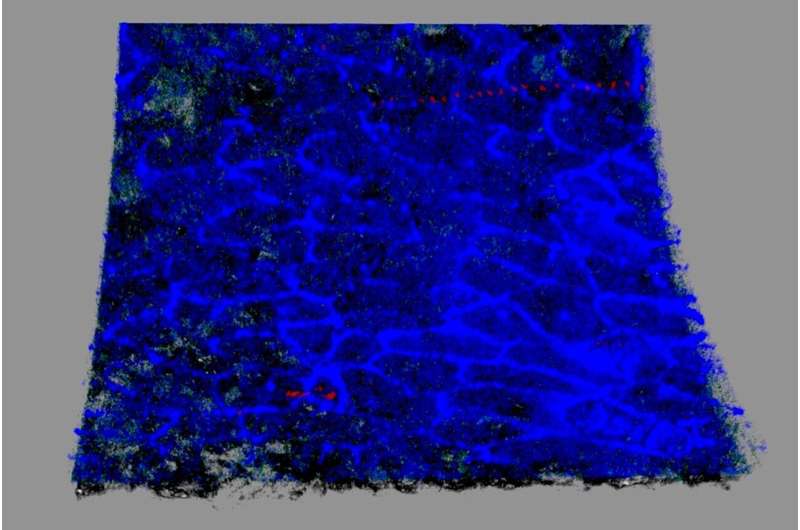This article has been reviewed according to Science X's editorial process and policies. Editors have highlighted the following attributes while ensuring the content's credibility:
fact-checked
peer-reviewed publication
trusted source
proofread
RNA fragment creates prospect for new atherosclerosis therapies

Atherosclerosis is considered a frequent cause of cardiovascular diseases and strokes. Despite medical progress, case numbers are constantly rising. Targeted new therapeutic approaches are therefore more important than ever.
An international team led by Professor Christian Weber, Director of the Institute for Cardiovascular Prevention (IPEK) at the University Hospital of Munich, and Professor Donato Santovito, leader of the Translational Vascular Therapy research group at IPEK, has now identified a specific microRNA molecule as a promising starting point for the investigation of new therapies. The research is published in the journal Science Translational Medicine.
Some time ago, the researchers had already demonstrated that the transmembrane protein CXCR4 plays a significant role in the development of atherosclerosis. The protein transmits signals to the cell interior. If CXCR4 is specifically silenced in arterial endothelial cells or in smooth muscle cells, it results in more severe atherosclerotic lesions.
At the same time, there is increased leukocyte ingress into the cell, which leads to inflammatory processes. With regard to leukocytes, however, the presence of CXCR4 can also promote the development of inflammatory processes.
"It made sense, therefore, to only boost the expression of CXCR4 on the cells of the vascular wall in order to counteract the atherosclerosis," says Santovito. "The challenge, however, is not to influence any biological processes, as the protein occurs in all cells and exercises various important functions."
Blockade molecule intervenes in signaling pathway
Using databases, molecular biological screening in cell cultures, and mouse models, the researchers therefore searched specifically for microRNA molecules that are limited to vascular cells and are involved in the regulation of CXCR4. And indeed, they managed to identify a good therapeutic starting point for the treatment of atherosclerosis in the form of miR-206, a candidate which occurs only in endothelial cells and in vascular smooth muscle cells. In those sites, it downregulates the expression of CXCR4 by binding to the transcripts of the CXCR4 gene and preventing their conversion into the protein.
For therapeutic application, the effect of miR-206 needs to be suppressed. To this end, the researchers developed a so-called target-site blocker (TSB)—a molecule that specifically interrupts interactions between miR-206 and the CXCR4 transcripts and thus only boosts its expression in the respective cells.
The researchers were able to demonstrate the effectiveness of this approach in a mouse model and in human cells in the culture. Most notably, the blocker they developed was able to prevent atherosclerosis in the mouse model.
"Eliminating miRNA-mediated gene suppression represents an attractive, feasible, and cost-effective method for fine-tuning gene expression at the cell-specific level," says LMU researcher Weber. Tissue-specific miRNA regulation pathways are prevalent and are considered to be a specific therapeutic target for a wide variety of diseases.
As their next step, the researchers plan to evaluate their results in preclinical studies with larger animal models within the framework of the German Cardiovascular Research Center (DZHK) and the Cluster for Nucleic Acid Therapeutics Munich (CNATM).
More information: Ismail Cimen et al, Targeting a cell-specific microRNA repressor of CXCR4 ameliorates atherosclerosis in mice, Science Translational Medicine (2023). DOI: 10.1126/scitranslmed.adf3357




















